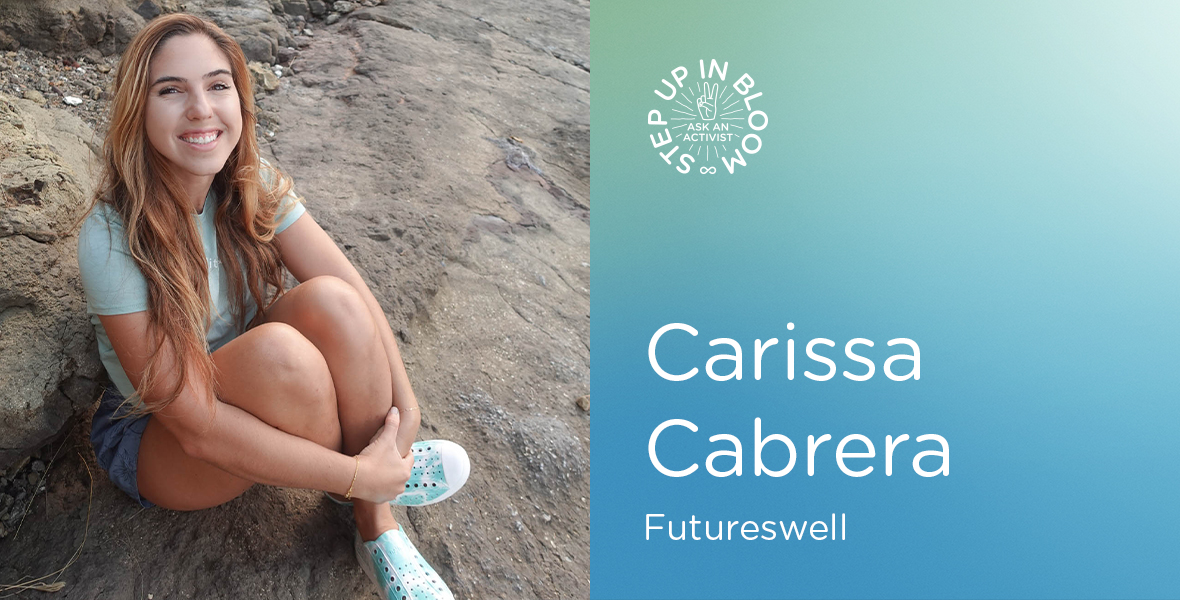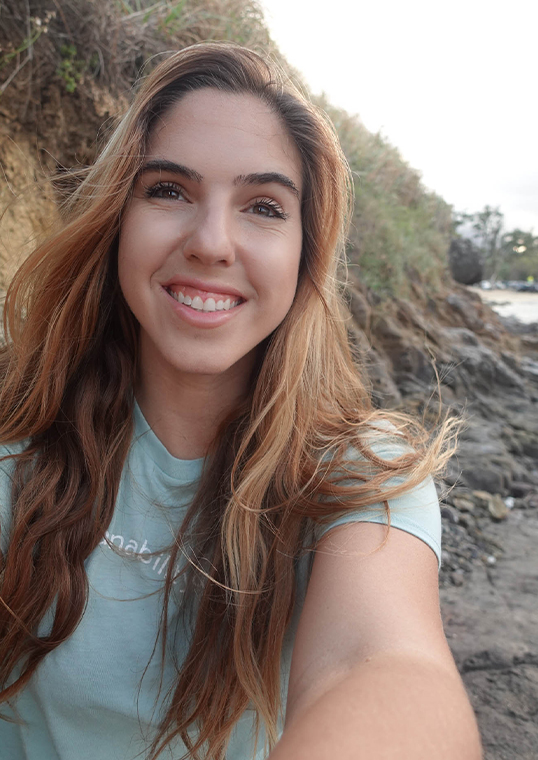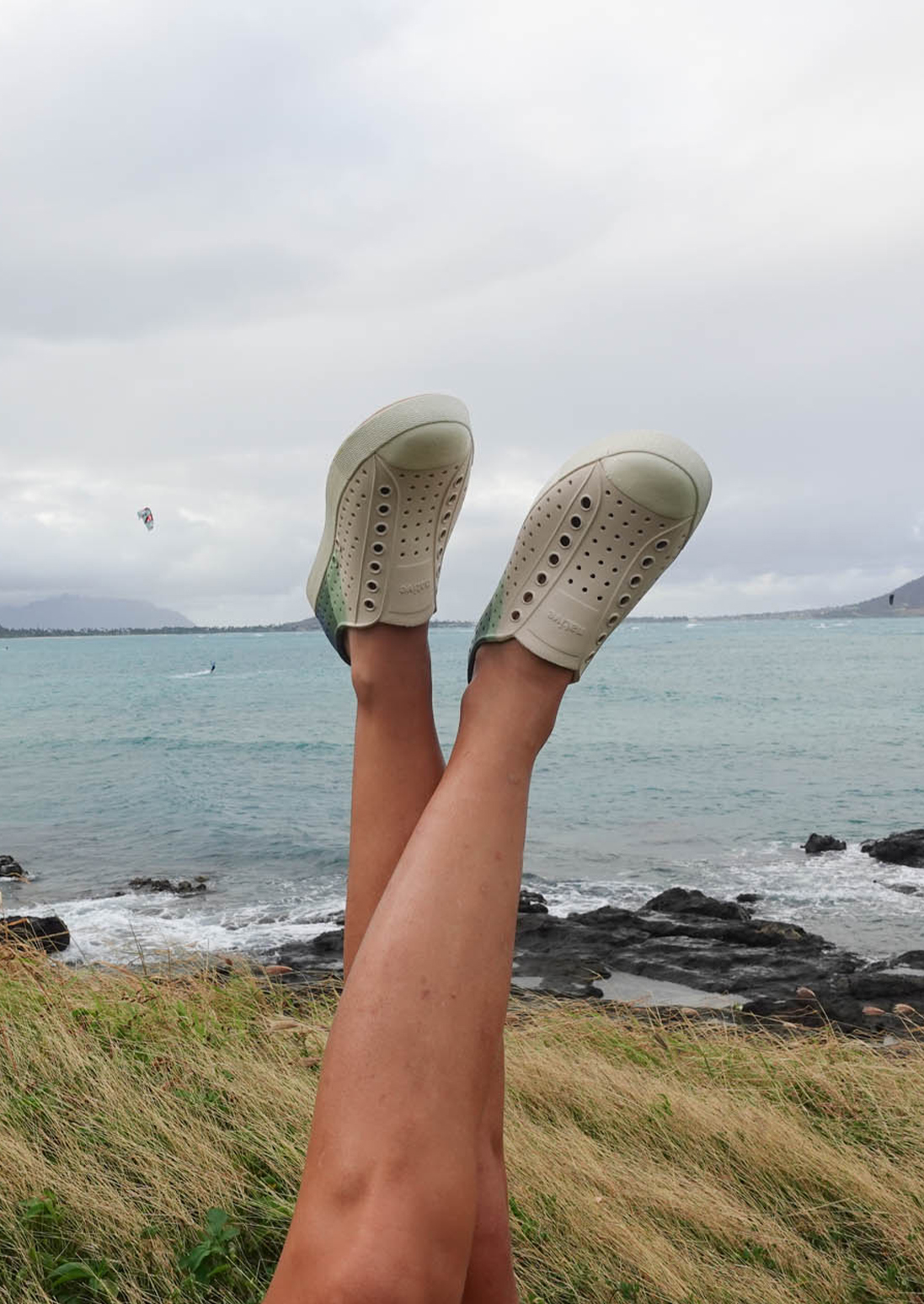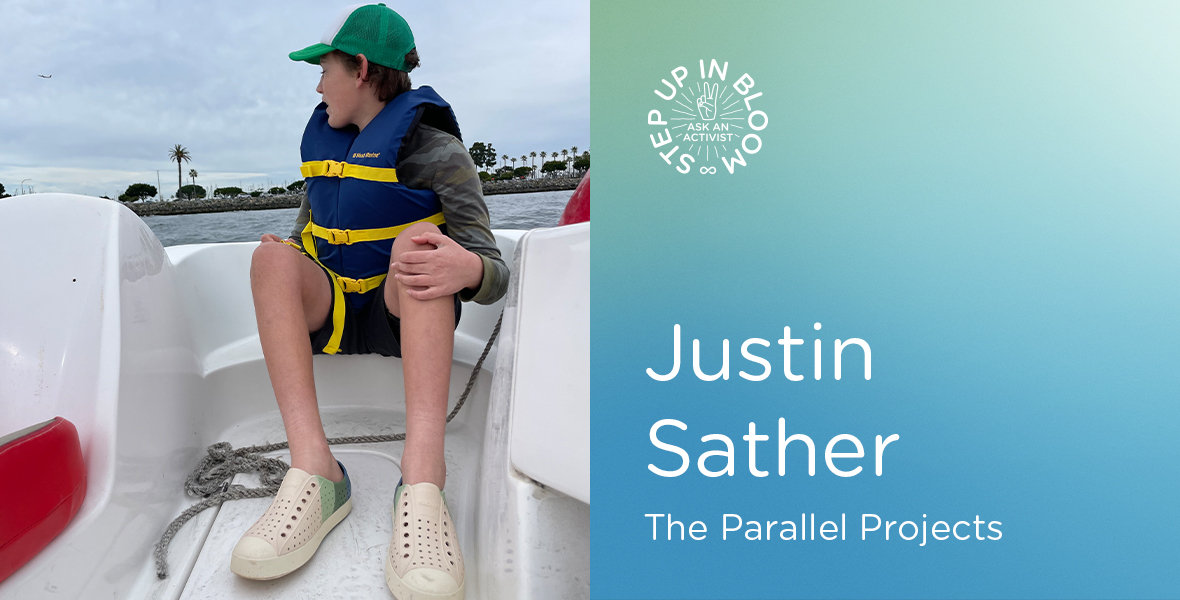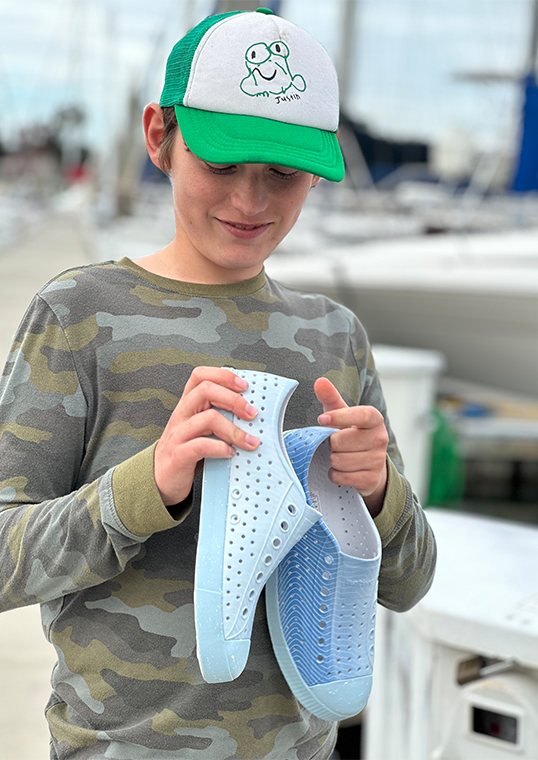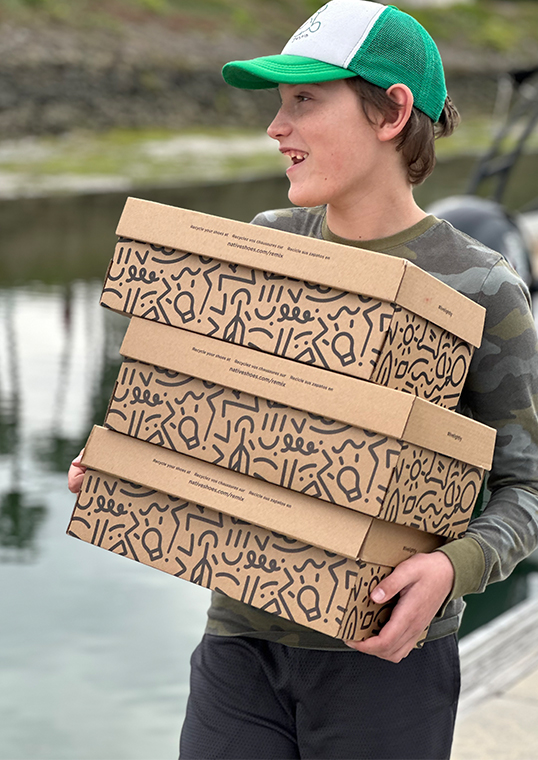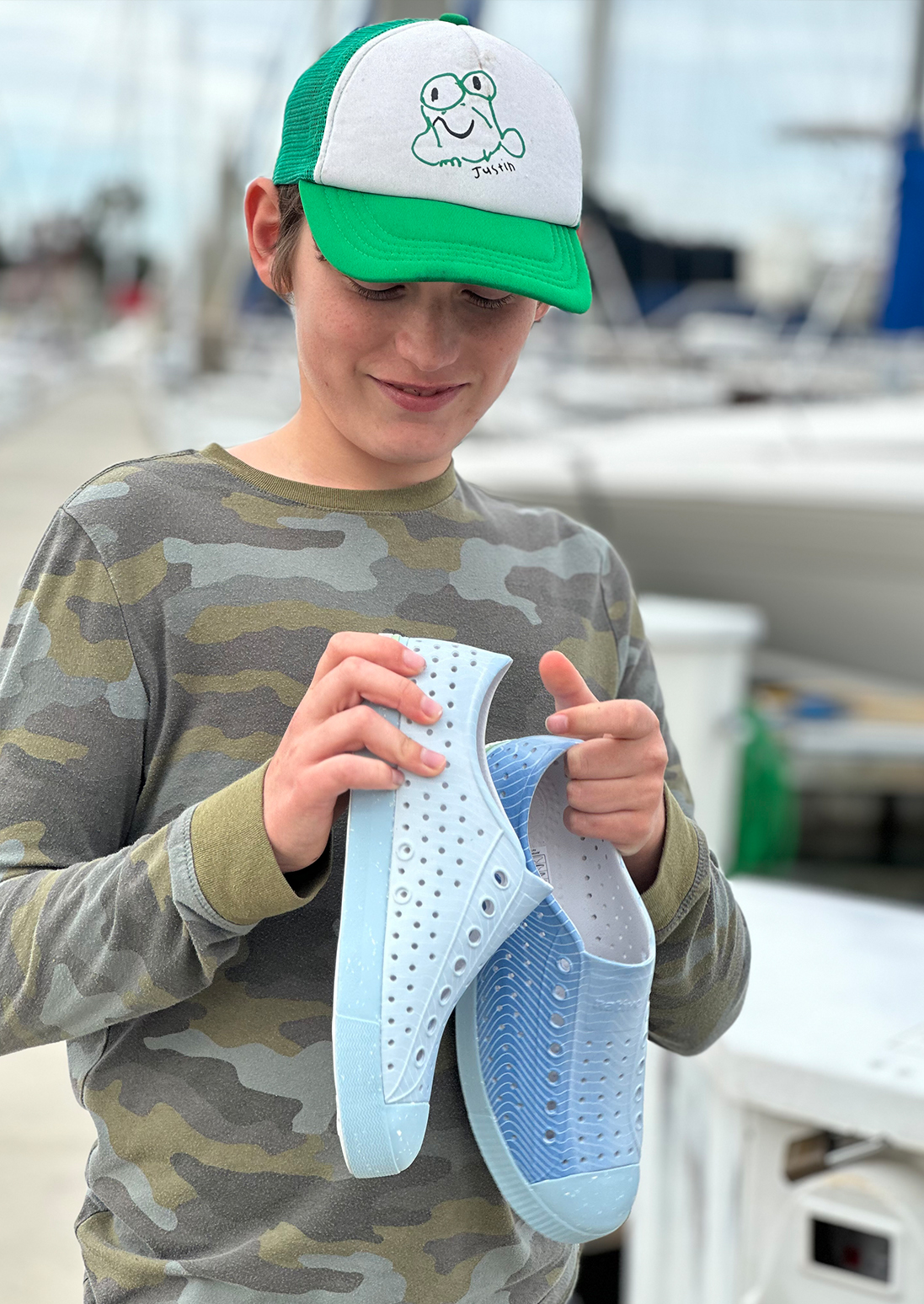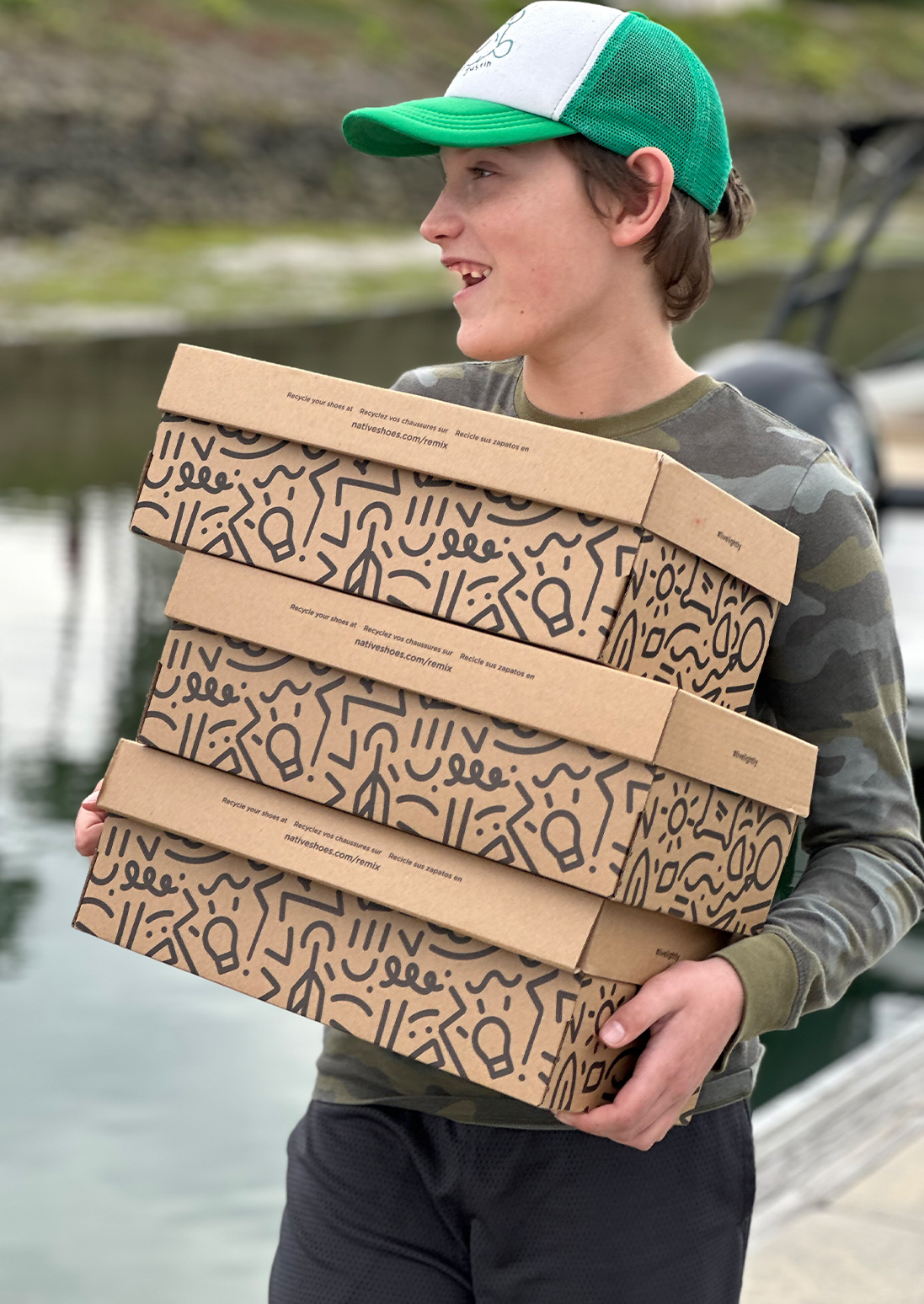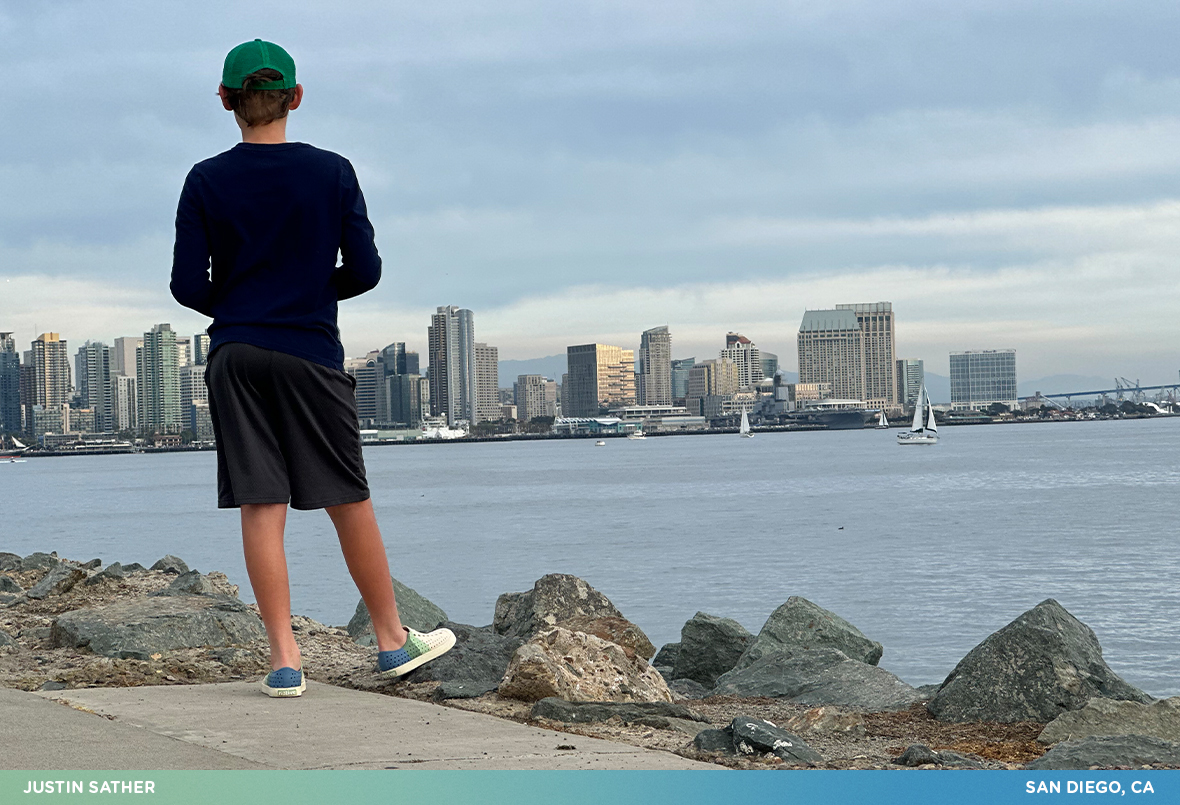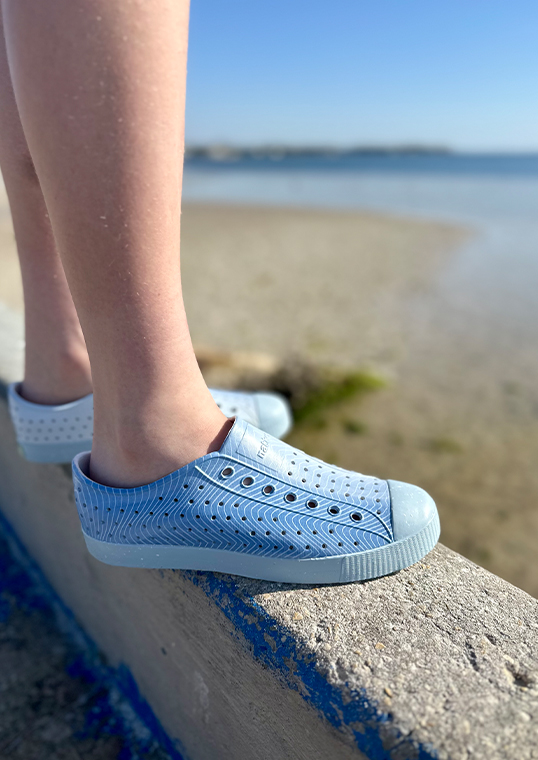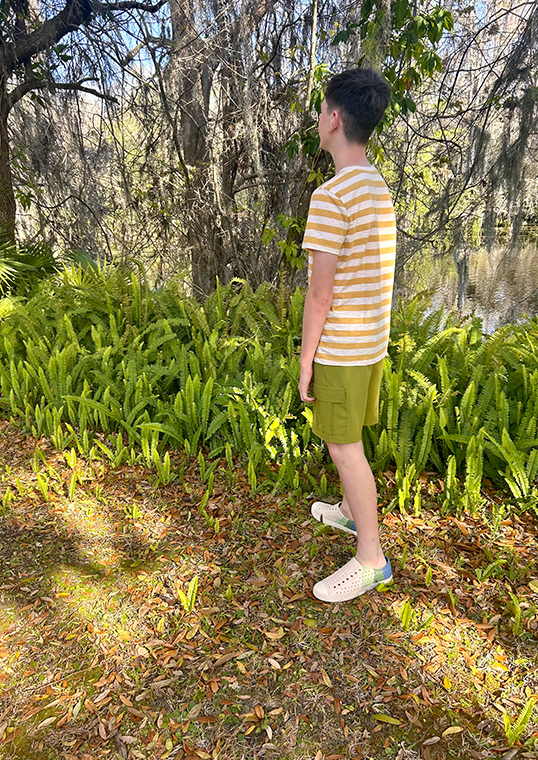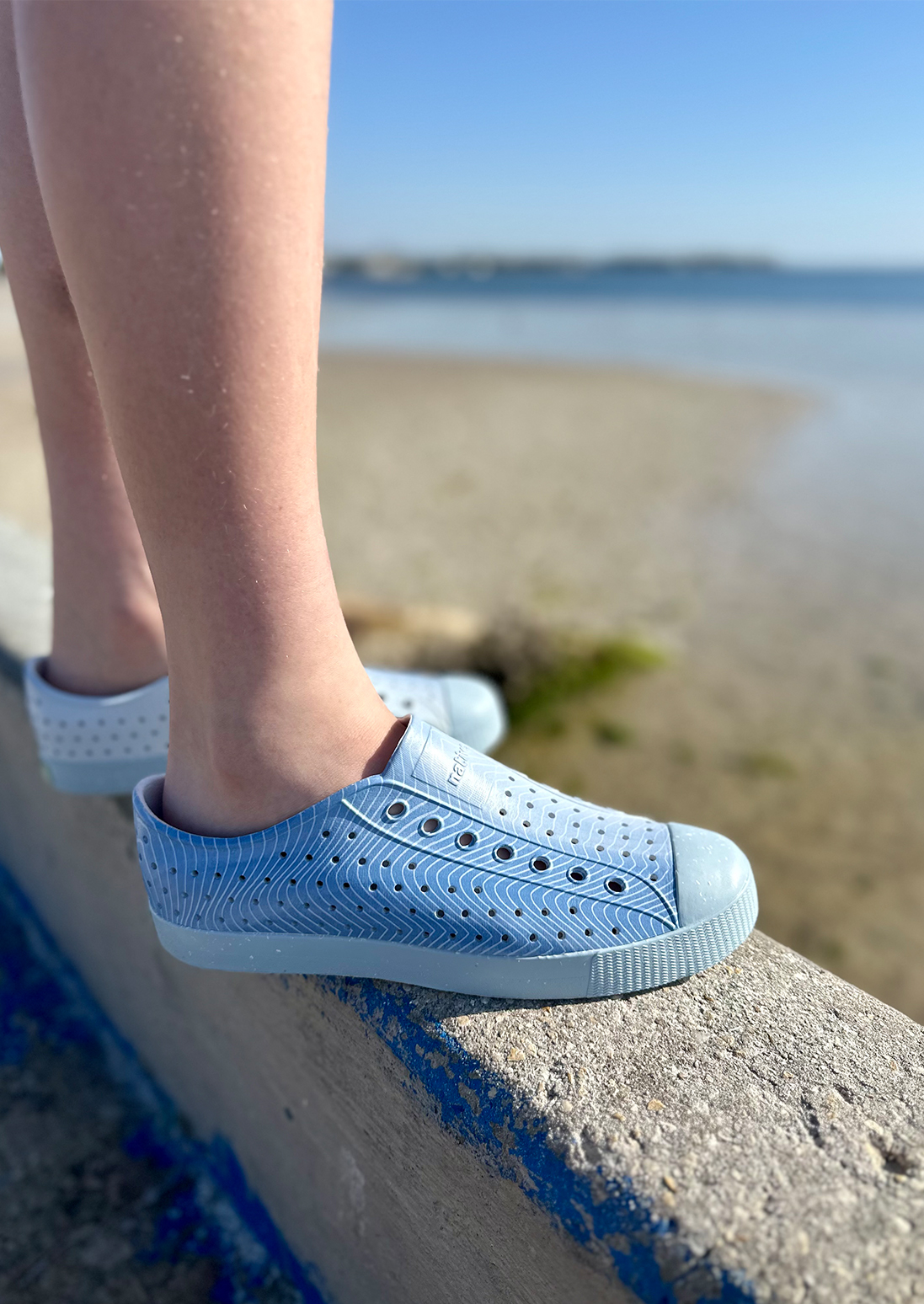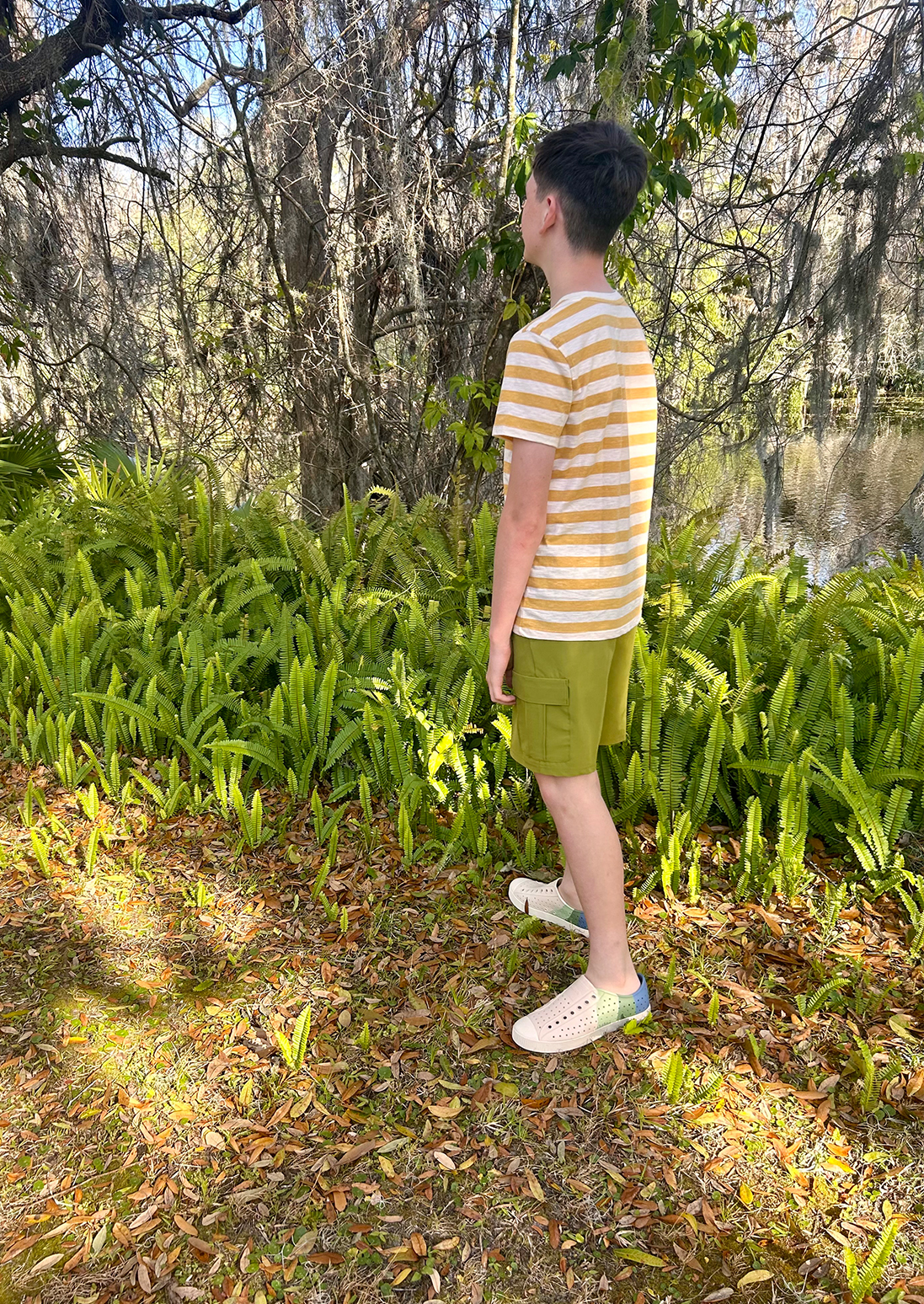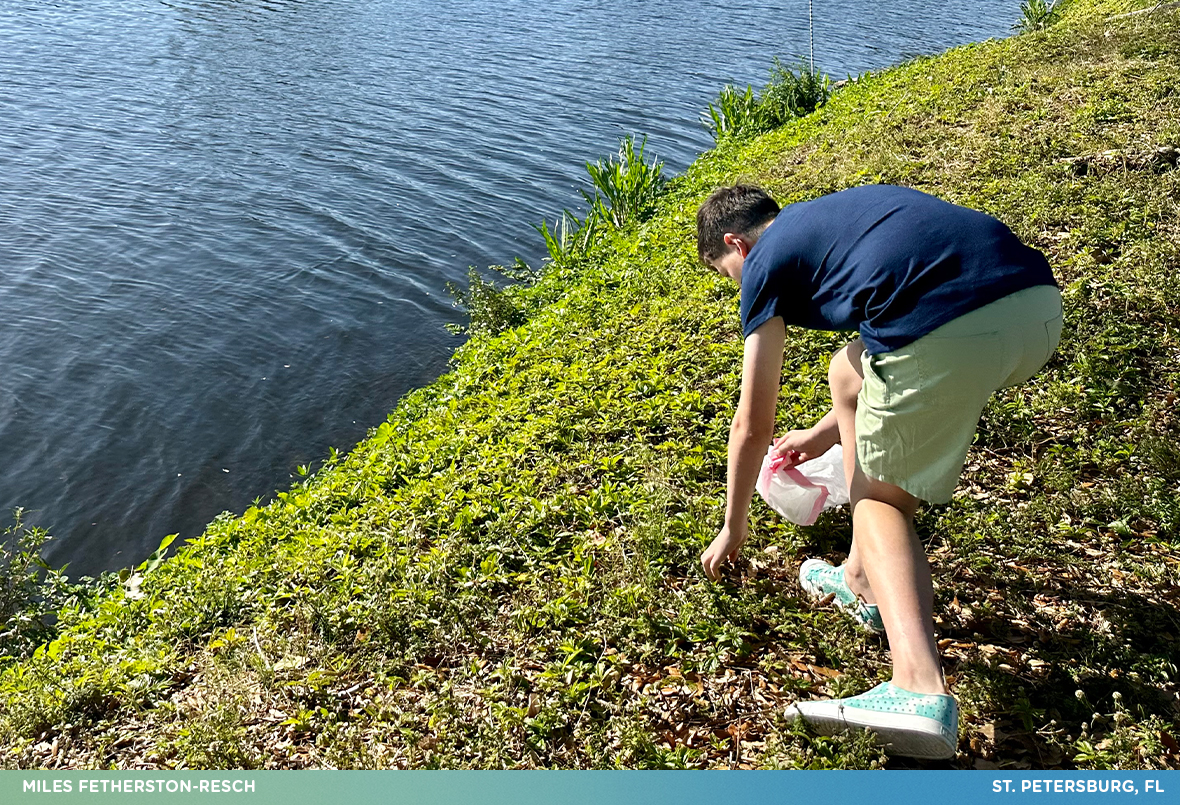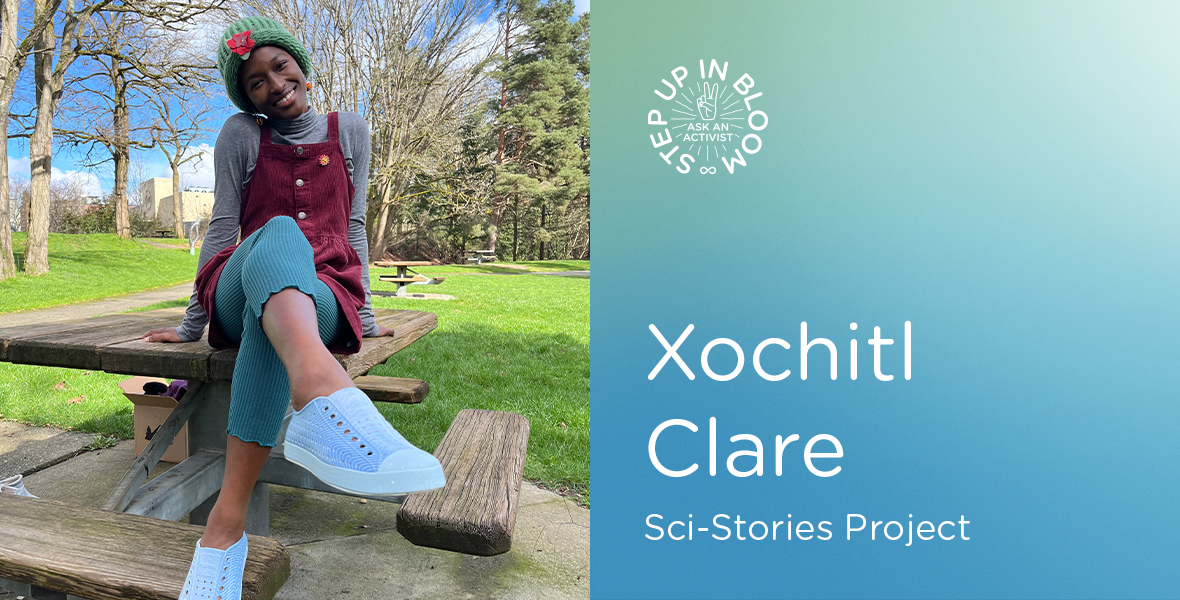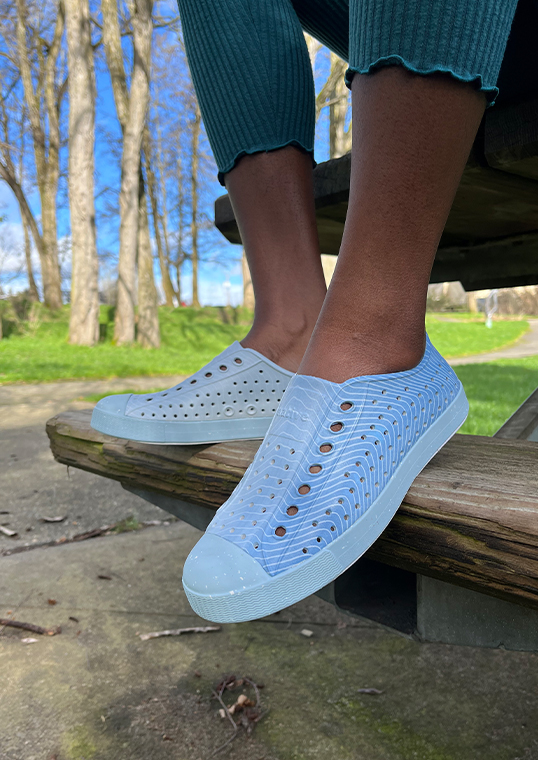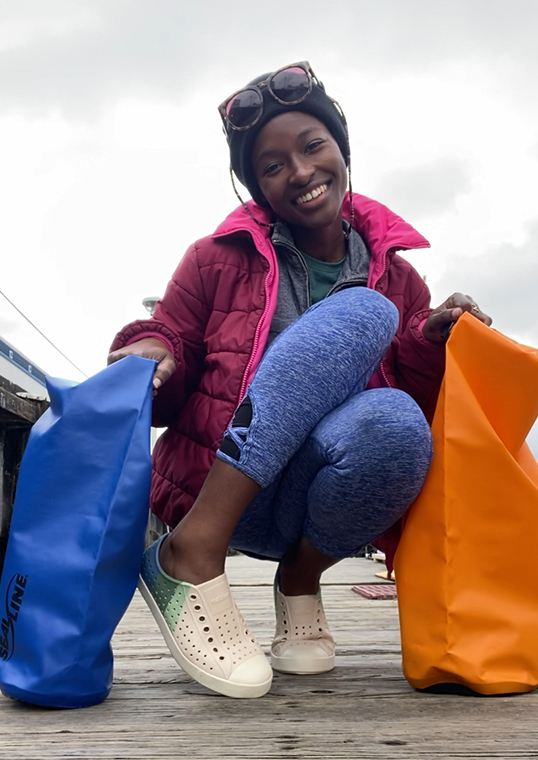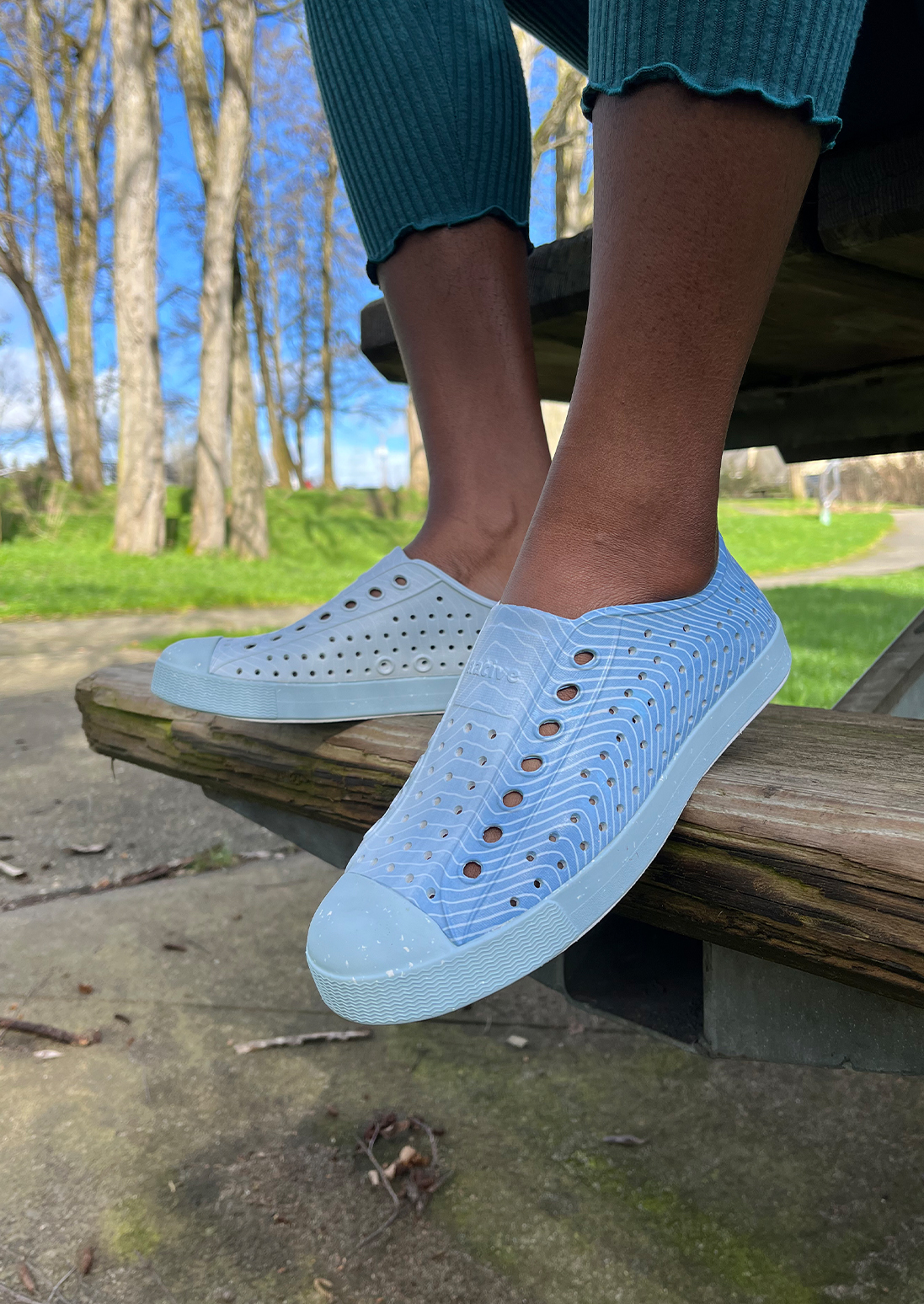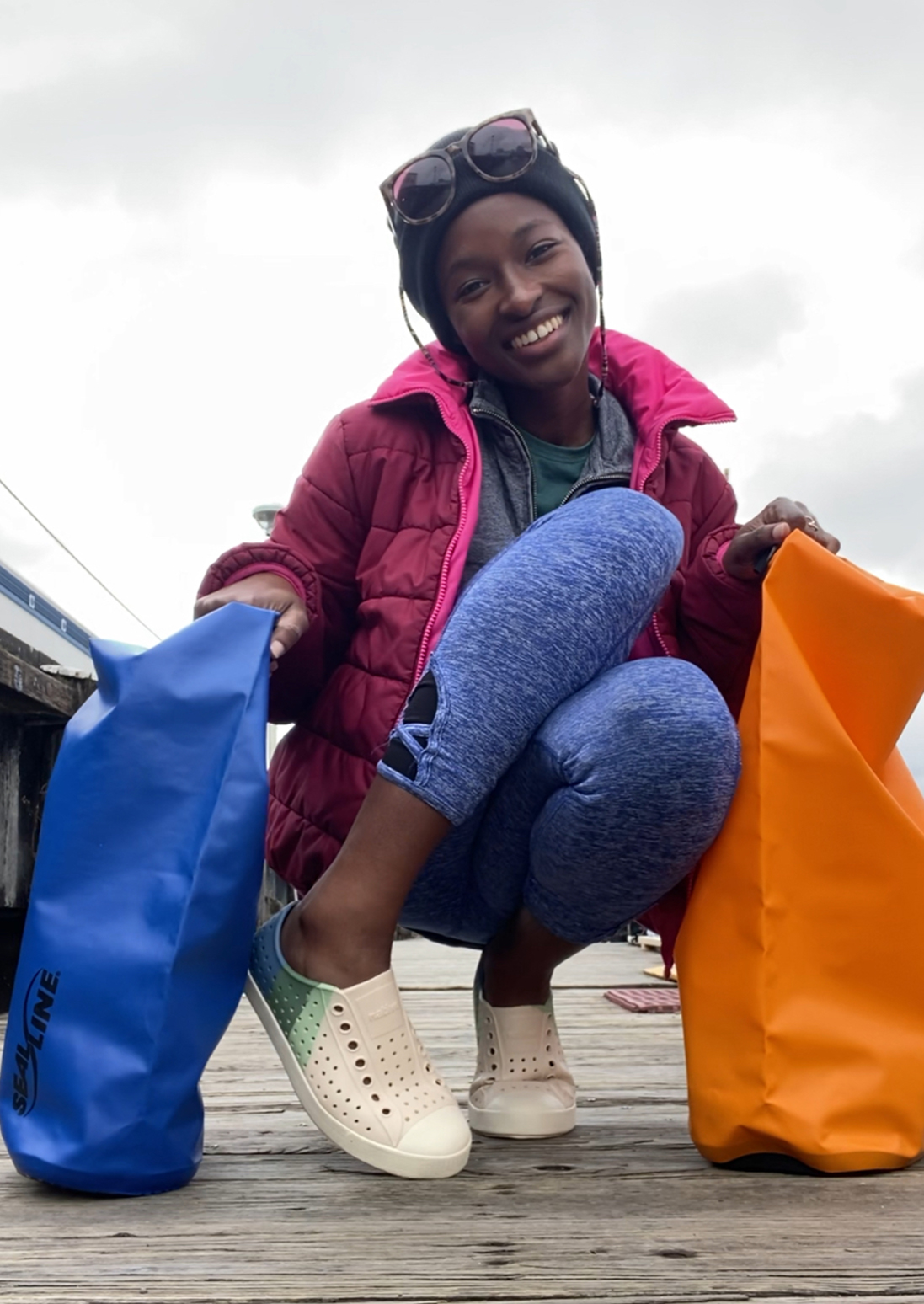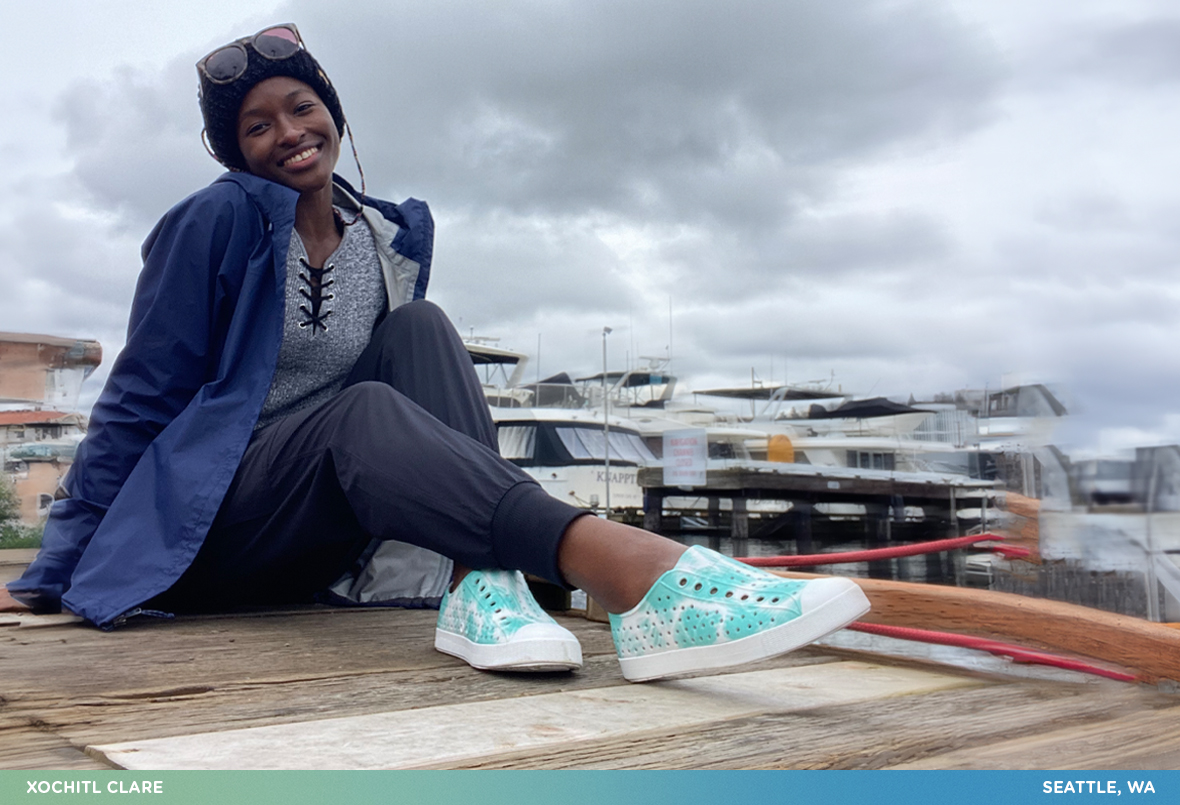Tiny Activism: World Water Day
Tiny Activism: World Water Day
Tiny Activists are the changemakers that care about the future of our planet and its people. They’re unafraid to stand up for their beliefs and challenge the status quo as they take steps towards making a positive impact.
In celebration of World Water Day on March 22nd, we reached out to four changemakers making waves for the ocean.
Get to know more about them and their work below.
Tiny Activists are the changemakers that care about the future of our planet and its people. They’re unafraid to stand up for their beliefs and challenge the status quo as they take steps towards making a positive impact.
In celebration of World Water Day on March 22nd, we reached out to four changemakers making waves for the ocean.
Get to know more about them and
their work below.
A marine biologist and an ocean climate advocate, Carissa works in the Kingdom of Hawai’i helping community groups to act and find ocean climate solutions.
A marine biologist and an ocean climate advocate, Carissa works in the Kingdom of Hawai’i helping community groups to act and find ocean climate solutions.
Q: Tell us about your background and how you got started in marine work?
A: I grew up in the desert far away from the ocean, but my childhood was marked by many ocean experiences that connected me with the marine life.
At the beginning of my career, I worked on endangered species recovery efforts and teaching students about the ocean through education and outreach.
Now, I work at the intersection of ocean climate storytelling, working with organizations and non-profits to build solutions from the group up and coalition building through the lens of advocacy.
Q: What was the inspiration behind starting Futureswell?
A:I started Futureswell in 2020 to serve as a consulting firm and community to showcase ocean solutions.
I saw that the movement needed two things:
1. It needed more personal and humanized stories to make conservation palpable to people and invite them to participate in solutions in an easy and educational way.
2. It also needed a strong recognition that the ocean and ocean conservation is our strongest solution to the climate crisis.
Q: What’s your favourite thing about what you do?
A: I love building solutions from the ground up with my community partners. There is so much potential in this movement to create the future that we want.
I truly believe there is an ocean of opportunity waiting for folks to engage in and bring their ideas to life.
Q: Why is choosing climate-conscious products important to you?
A: Being a conscious consumer means supporting products that are aligned with your values when you can.
It’s up to us to vote for the future that we want. Whether that vote extends into our personal product choices, how we show up to the ballot box or to behaviors that we adopt in our everyday life.
Q: How do you wear your Native Shoes?
A: I wear them near the water, when I’m tide pooling, walking on lava rocks, or when I’m going out on a boat!
Q: What’s your favourite way to spend a day in or by the water?
A: My favourite way to spend a day in the water is through surfing. It’s something that you can do anywhere there’s a wave. It’s calming, I get to connect with the water, and it allows you to just have fun with your friends or with the ocean alone.
Q: What advice would you give to fellow activists who want to make an impact?
A: Get to know yourself and your gifts and skills. Those are going to be what helps serve the movement and push changemaking forward.
If you’re an artist or storyteller, use that to help accelerate the issues and causes you care about. Changemaking comes in many forms. Making an impact looks different to everybody and I cannot wait to see what yours is!
Q: What’s next for you?
A: I’m continuing to build solution programs here in Hawai’i that represent the future that we need here.
It’s all about tapping into communication pathways that bring more people in. I really love the potential of publishing books that are inviting for kids, or the idea of TV shows and script writing that engage more people in ocean conservation.
There’s never going to be a time in my life where I’m not working with partners to build solutions or harnessing the communication pathways to engage more folks in the movement. If I’m doing that, I have nothing to complain about!
Based in San Diego, California Justin is the 13-year-old founder of The Parallel Project—a worldwide initiative focused on reducing single use plastics.
Based in San Diego, California Justin is the 13-year-old founder of The Parallel Project—a worldwide initiative focused on reducing single use plastics.
Q: Tell us about your background and how you got started in Marine work.
A: In kindergarten, I learned one idea could change the world. When I met conservationist Dr. Jane Goodall, she told me that there could be more plastic than fish in the ocean by 2050. After that, I wanted to make a change and save the planet.
Q: What is your inspiration behind starting the Parallel Projects?
A: I met pen pals all around the world. From Kenya, Tanzania, Cameroon, and India, they’ve all told me they don’t have enough recycling measures. Understanding that this is why plastic pollution is a global problem, that’s why I started The Parallel Projects.
The mission of The Parallel Projects is to keep our rivers and oceans clean and healthy, so it is safe for people and animals.
Q: What is your favourite thing about what you do?
A: I enjoy getting to work with businesses and world leaders. I want to find creative solutions to make the planet healthier.
Q: Why is choosing climate-conscious products important to you?
A: They are important because a lot of businesses pollute the environment so I want to support the ones that have products that are helping the environment in any way that they can.
Q: How do you wear Native Shoes?
A: I wear my Native Shoes everywhere. To the beach, the park, with my friends and even to the lagoon!
Q: What is your favorite way to spend a day in or by the water?
A: I like to swim in the ocean and that is fun for me. I especially like to be near lagoons, rivers, and wetlands. That’s also because my favourite animal (frogs) lives there!
Q: What advice would you give to fellow kids who want to make an impact?
A: My advice to kids who want to create change is to start off small. Grow your idea, be brave, and stay determined. Do not give up!
Q: What is next for you?
A: Next, I want to protect 30% of the planet by 2030 by focusing on land and water. So far, I’ve protected 100 acres in Ecuador. Now, I’m protecting the beaches and oceans in Panama.
Miles is 11-years old marine conservationist based in Florida and the founder of Kids Saving Oceans.
Miles is 11-years old marine conservationist based in Florida and the founder of Kids Saving Oceans.
Q: Tell us about your background and how you got started in marine work.
A: When I was younger, I would go spend time by the ocean a lot with my family. I really liked the beach and spending time there.
Q: What is your favorite way to spend a day in or by the water?
A: Nothing beats spending a day in the water or just playing in the sand.
Q: What was your inspiration behind starting Kids Saving Oceans?
A: When I was six, my mom and I went to Amelia Island, and we got to watch Shark Week there. But after seeing an image of a polluted, empty, and lifeless ocean, I wanted to do something about it.
Q: What is your favourite thing about what you do?
A: I love meeting new people and knowing that even though I’m pretty young, I can still make a difference in the world.
Q: Why is choosing climate-conscious products important to you?
A: It’s important to spread awareness and let people know that they can also help no matter whatever they do.
Q: How do you wear your Native Shoes?
A: I wear them in my house, I wear them to the beach, to the park and pretty much everywhere!
Q: What advice would you give to fellow kids who want to make an impact?
A: The advice I would give is if you have a dream, go for it. Don’t let anyone tell you, you can’t do it.
Q: What’s next for you?
A: New products, spreading even more awareness, going to events, and talking to a ton of people. Making sure everyone knows that they can make a difference—no matter how big or small.
My name is Dr. Xochitl Clare and I am a marine biologist and performing artist. I spend my days finding different ways to conserve our ocean environments and to think about climate change. It also means using my background as an artist to make sure that the stories of the ocean are told and are accessible to everyone.
My name is Dr. Xochitl Clare and I am a marine biologist and performing artist. I spend my days finding different ways to conserve our ocean environments and to think about climate change. It also means using my background as an artist to make sure that the stories of the ocean are told and are accessible to everyone.
Q: Tell us about your background and how you got started in marine work.
A: I came into marine science as an artist first and that’s what inspired all the marine science work that I do today. I am so inspired by the way that nature, just like our relationships, are interconnected.
I spent a lot of time connecting with others who were in marine sciences asking about what their journey was like. And it was through all those relationships and many mentors that I had, and eventually the students that I have, that continue to be the reason why I come back to marine science work.
Q: What was your inspiration behind starting Sci-Stories Project?
A: When I started Sci-Stories Project, it wasn’t just an idea to create a media making platform, but rather a place for people to come and find community. To brainstorm about different ways that they’ve been documenting their nature and oceanside communities.
Q: What is your favourite thing about what you do?
A: It is the people I meet. The marine science work that I do is mostly based in fisheries.
Our first and most often way that we interact with the ocean is as a resource. Things that we eat from it. And that really affords me the ability to meet people from so many different walks of life.
Q: Why is choosing climate-conscious products important to you?
A: The way that we’re going to conserve our planet is by involving everyone and that includes all the things that we buy.
Being someone who works in the climate change space, it is important that I'm seeing that it's not just marine biologists or sciences that are taking on fighting the climate crisis, but it’s companies like Native Shoes and other groups that are coming together to change the way that we buy and consume things.
Q: How do you wear your Native Shoes?
A: What’s obvious about doing marine science work is that you’re going to get wet. And not often do you find shoes that are waterproof, water safe, but also fashionable. I feel like I get to express my personality and wear vibrant colours and they’re a great talking point.
Q: What is your favourite way to spend a day in or by the water?
A: It’s underwater. I became a scuba diver only a few years after learning how to swim as an adult.
The underwater role was largely a mystery to me for a very long time. If you still don’t know how to swim, that is okay. Just know that there are many ways to overcome your fear and once I did, that became my favourite way to spend time with the ocean.
Q: What advice would you give to fellow activists who want to make an impact?
A: As issues multiply, it can often feel that you are not doing enough. But just know that if you already care, you are.
Even if you don’t exactly see yourself in the climate space, or if you have a job outside of science, you can still make a huge impact just simply being educated. Use your relationships, your voice, and share with others what you’re learning. It’s from those conversations about really important issues that we start to see change happen.
Q: What’s next for you?
A: Continuing to work in fisheries in the tropics.
I’m also going to make more environmental films on community members that are local here in the Pacific Northwest and Belize to amplify the work that is being done by small businesses.
